Biological macromolecules like proteins, lipids (fats), and carbohydrates (sugars and starches)
are the building blocks of living cells. They also use them to store energy. This week, for biology, we made food samples, and tested them for fat and starch. Here is how we did it:
Fat Test
For the fat test, we tested samples of milk, butter, peanut butter, olive oil, Nutella, egg whites, an egg yolk, heavy cream, sunflower seeds, sesame seeds and yogurt. We also used water for the control sample. We tested them by taking a big piece of brown paper-bag-type paper, drawing squares for the samples, and spreading a little of each food in its square. We than waited for around 15 minutes for the food samples to dry. Once dry, any sample containing fat left a dark grease stain on the paper.
Starch Test
The starch test was slightly more complicated. For the starch test, we made samples of cooked pasta, bread, crackers, a blue chip, flour, a potato, sugar, corn starch. Again, we used water as a control. For the set-up, we took a small sample of each food, and put it in a small plastic cup. For the testing, we put a few drops of iodine on the sample. If the sample contained starch, the drops turned blue. This is because (from Wikipedia) "Starch forms an unstable complex (blue colored) in low concentrations of Iodine."

The potato after the Iodine was added.
As it's reacting with the starch,
the brown Iodine turns dark blue.

The sugar after the Iodine was added.
As you can see, the Iodine did not change color,
meaning that the sugar contains no starch.

One of the cracker samples we made after the iodine was added.
This sample has water added because we were trying to contrast it
with a cracker sample that we chewed up. The starch in the chewed-up
sample was supposed to convert to sugar via the enzymes in our saliva.
Unfortunately, we were unable to detect any difference
between the chewed-up sample and the regular sample.

We followed these directions from Raft.net, which contain a simple explanation of what's happening. A more detailed chemical explanation is available at Butter Through the Ages.
Resources:
SEP: Testing for Lipids, Proteins and Carbohydrates
http://seplessons.ucsf.edu/node/362
Protein, Carbohydrate, Lipid Power Point http://teacher.edmonds.wednet.edu/mths/awelman/index.php?section=documents
Virtual Protein, Carbohydrate, Lipid Lab Tests
http://faculty.kirkwood.edu/apeterk/learningobjects/biologylabs.htm
Home Training Tools Food Lab
http://www.hometrainingtools.com/food-chemistry-projects/a/1591/





























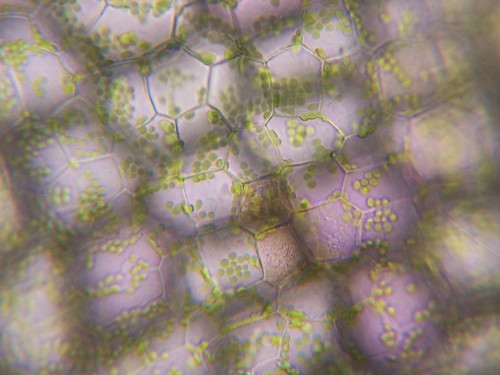
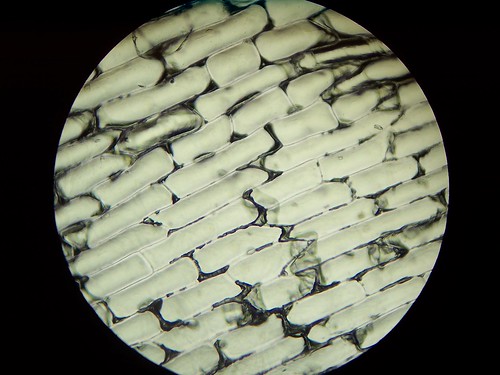
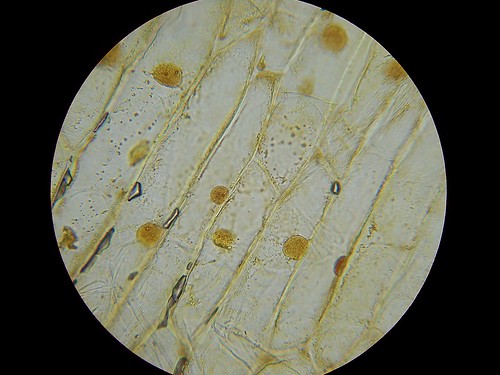
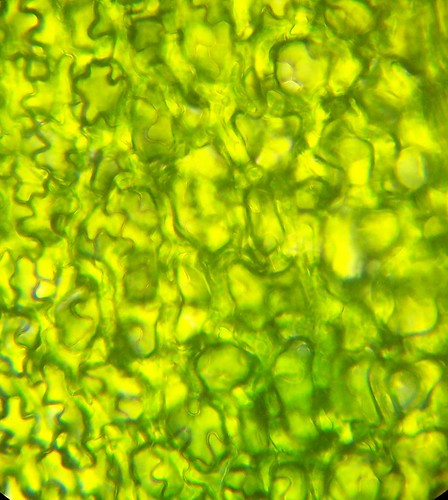
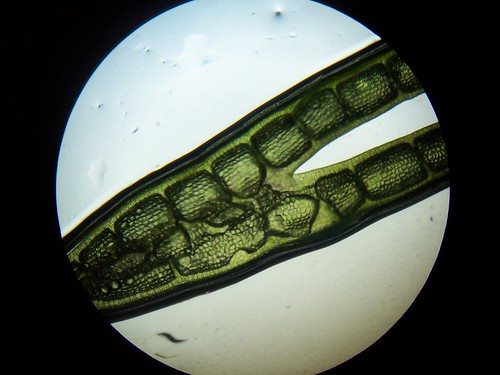

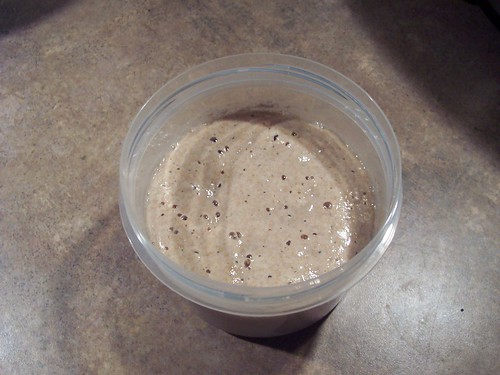
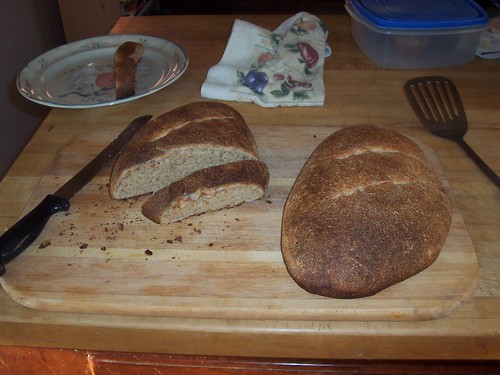
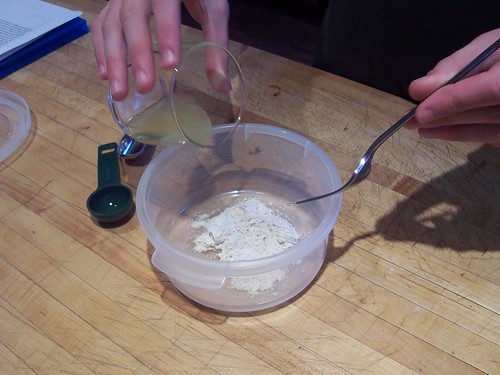
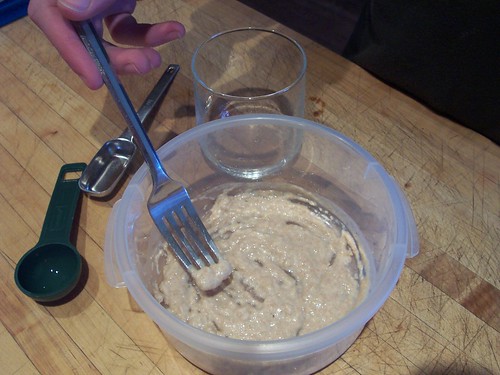








 The flavoring being poured into the bottle
The flavoring being poured into the bottle







